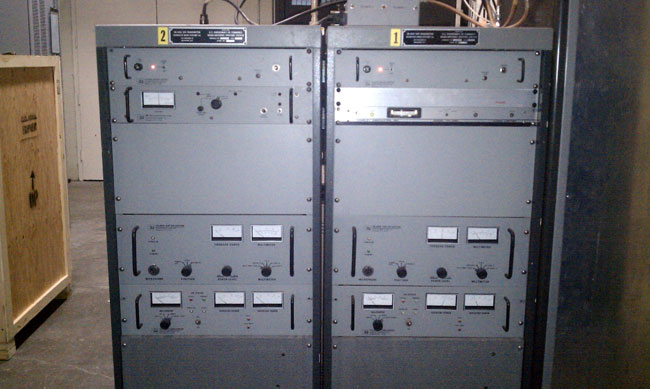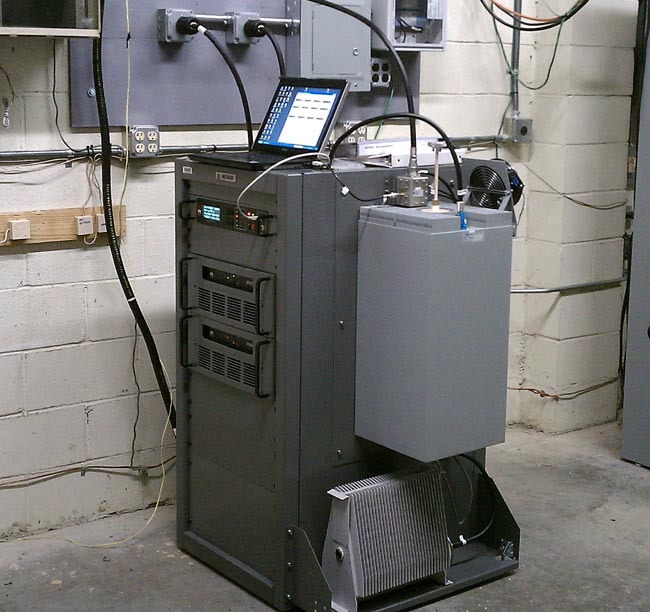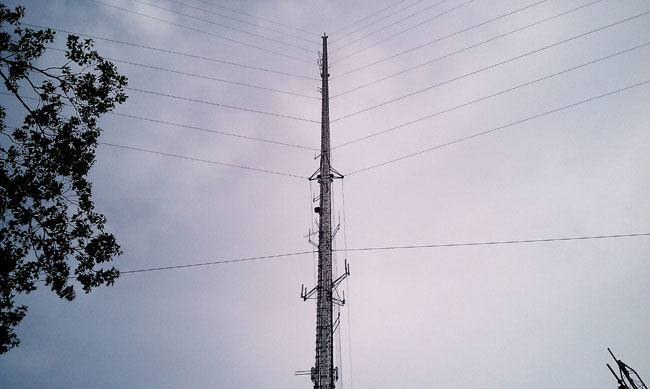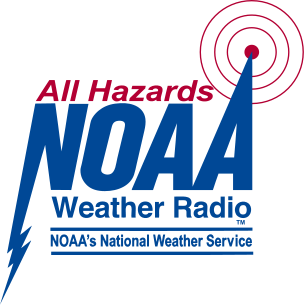If you have ever wondered about those ubiquitous NOAA all hazards radio (formerly National Weather Service radio) stations, wonder no more. These stations transmit on one of five frequencies in the 162 MHz band with power ranges between 250 and 1,000 watts. There are over 1,000 transmitters scattered throughout the country including outlying territories like American Samoa, Guam, Northern Marianas, Virgin Islands, and Puerto Rico.
The original 1958 plan was for these stations to transmit Aviation and Marine weather forecasts. The system was expanded for use by the general public in the early sixties. Since that time, it has been slowly expanding, with the most recent survey concluding that NOAA weather radio station can be received by 95% of the US population.
One of those stations in my neck of the woods is due for a transmitter upgrade. WXL-37 uses two Scientific Radio Systems SR-416P transmitters, as a main and a standby. The programming audio comes from the NWS office in Albany, New York, via TELCO line. The old transmitters are tube type made by in 1976. They are reliable transmitters, however, after 34 years of continuous use, they are getting a little tired. They are also big and bulky and since Scientific Radio Systems went out of business, not been supported.
This year, NOAA is replacing these transmitters with a Nautel NG1000. I have worked with Nautel’s military-grade transmitters before and found them to be extremely rugged. Those transmitters are what the original AMPFET design was based on. Nautel is not the only vendor that NOAA is using however, others include Armstrong Transmitters and Crown Broadcast.

The Nautel NG1000 is a little thing, taking up about half an equipment rack with an outboard cavity filter and dummy load. There are two drawers, a controller an antenna switch, and a remote control. Each drawer is its own 1 KW transmitter. The GUI is on a laptop, which is what I prefer. If there must be some sort of computer-driven GUI, then make it removable, so that when lightning strikes the 1,000-foot steel lightning rod 25 feet away, it doesn’t get blown up. Each transmitter is connected to a 30 AMP 240 Volt breaker via a 4-prong twist lock plug.

The antenna for this station is near the middle of this 1,000-foot tower, thus the station gets excellent coverage with a TPO of 1,000 watts.

On a related side note, the computer synthesized voices normally heard on NOAA stations took several years to evolve. Remember when this began back in the mid 1990’s with “Paul.” Several years later, “Craig” and “Donna” were introduced. Finally, “Tom,” is able to change voice inflections for emphasis. When I was in the Coast Guard, we did high seas synopsis and forecast on HF without aid of computers. At times, especially during typhoon season, it got a little busy in the weather broadcast position. There are advantages and disadvantages to both methods. Personally, I’d rather hear a human voice, especially in a crisis.

